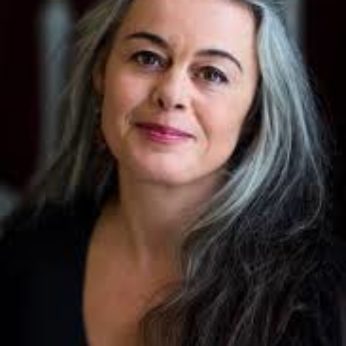Composer: Georg Frideric Handel (b. 1685 - d. 1759)
Performance date: 03/07/2015
Venue: St. Brendan’s Church
Composition Year: 1736
Duration: 00:28:36
Recording Engineer: Richard McCullough, RTÉ lyric fm
Instrumentation Category:Large Mixed Ensemble
Instrumentation Other: S-solo, T-solo, 2vn,va,vc,db, lute, hpd
Artists:
Maria Keohane -
[soprano]
James Gilchrist -
[tenor]
Arcangelo (Sophie Gent, James Toll [violins], Rebecca Jones [viola], Sarah McMahon [cello], Tim Amherst [bass], David Miller [lute], Jonathan Cohen [harpsichord,director]) -
[baroque ensemble]

We owe this cantata to Handel’s setting of Dryden’s
Ode Alexander’s Feast, which was too
short to make a full evening’s music. Cecilia,
volgi una sguardo was written to be performed between the two parts of the
Ode. The presence of an Italian cantata in the middle of Dryden’s Alexander’s Feast may seem odd but two
of his singers, Anna Strada and Carlo Arrigoni, were Italian. Arrigoni was also
a lutenist, but was unable to sing in English, so it made sense to give him and
Strada a work in their native language.
Cecilia vogli
originated in another incomplete Cecilian work, Splenda l’alba in oriente, dating from around 1711. Handel borrowed
some of this work’s text and music to create the new work. Cecilia vogli began as two arias along with their recitatives for
the tenor, followed by a recitative for the soprano and the final duet. This,
however, could hardly be satisfactory for Handel’s leading soprano and he
created the aria Sei cara, sei bella and
an extra recitative for her. Strada was the leading lady in Handel’s company
from 1729-1737. She performed in at least 24 operas under his direction and
also sang in English in his oratorio performances. Doubtless she knew how to
extract the music she wanted from the impresario-composer.
The first aria is modestly accompanied with continuo
alone, but tests the tenor voice with a highly elaborate vocal line. His next
aria has a lively triple-time rhythm accompanied by the strings. Sei cara, sei bella, Strada’s soprano
aria, is quite special. The main section opens with the strings in full flight,
but tempo slows for Sei cara. The
vocal line is dominated by long, florid runs. The mysterious central section Un puro ardor, un bel seren undergoes a
remarkable change of mood, introducing ravishing intensity to the music perhaps
echoing the rapt heaven-ward gazing of St Cecilia found in many Renaissance
paintings.
The cantata closes with the famous duet Tra amplessi innocenti, whose jaunty
rhythms ends this cantata and this Festival’s Baroque series in a mood of
joyful celebration.
Copyright © 2025 West Cork Music. All rights reserved.
Designed and developed by Matrix Internet